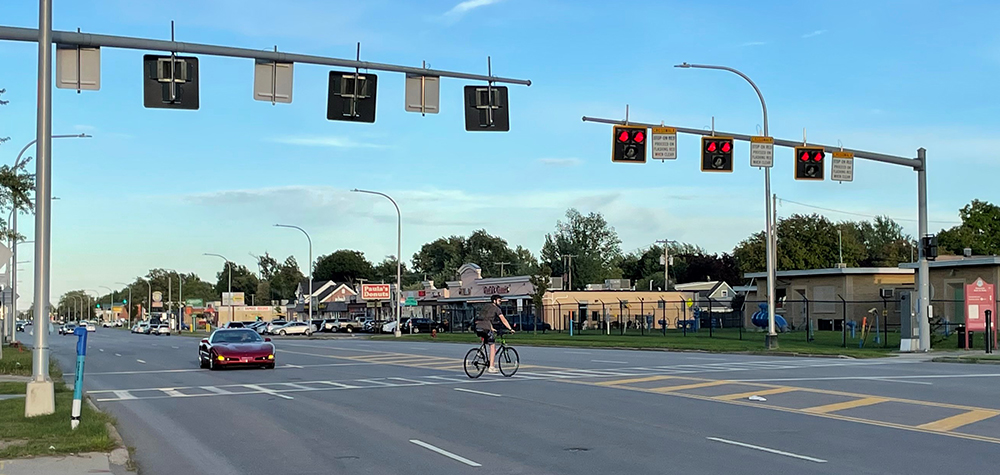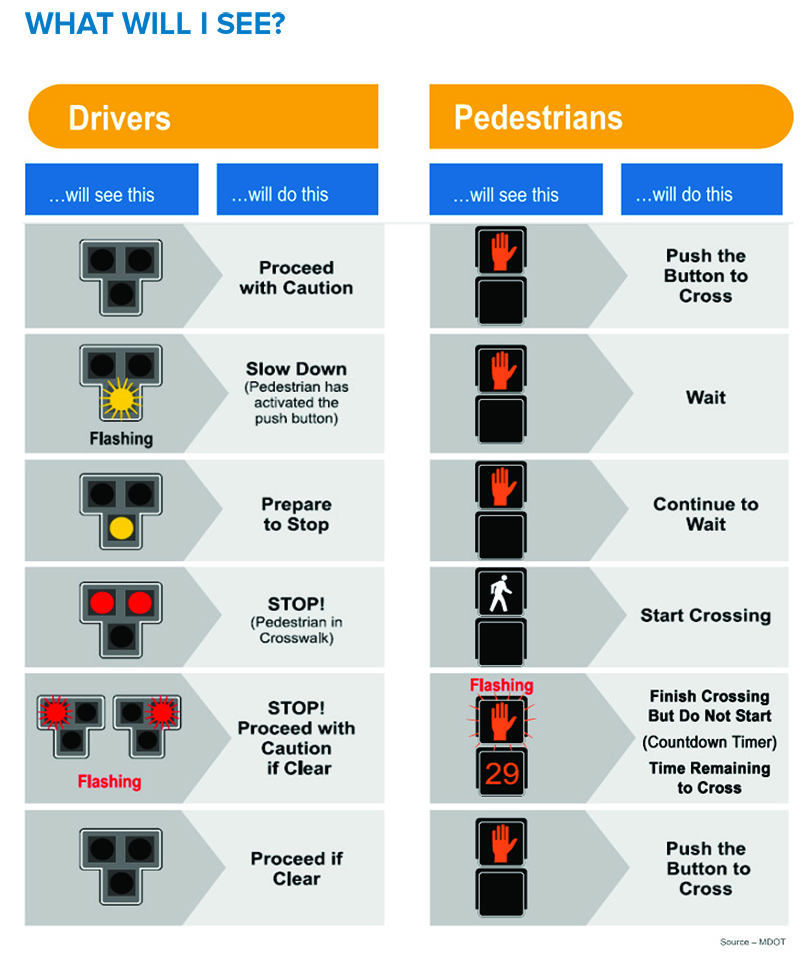Insights: HAWK Signals Lead to Safer Crossings for Pedestrians

There is an increased focus on ensuring that the needs of all transportation users—pedestrians and bicyclists, as well as motor vehicles—is met. The public is requesting that separate facilities for pedestrians and bicyclists be provided or improved whenever possible. Transportation professionals are learning that the lack of safe, dedicated facilities is discouraging these modes of transportation and creating a greater reliance on motor vehicles. Municipalities have begun to work with the public to develop complete street programs to address these needs.
According to FHWA, mid-block crossings equipped with a HAWK signal could have up to 69% less accidents than a mid-block crossing without any traffic control.
One of the biggest transportation challenges is how to safely cross pedestrians and bicyclists at mid-block crossings. An innovate solution to this problem is a High-Intensity Activated crossWalK beacon, commonly referred to as a HAWK. The beacon is used to warn and control traffic at an unsignalized location to assist pedestrians in crossing a street or highway at a marked crosswalk.
In the realm of traffic regulations, staying informed about advancements like HAWK signals becomes crucial for both drivers and pedestrians. However, despite efforts to mitigate risks, traffic violations can occur. Platforms like New Jersey Traffic Ticket offer a convenient avenue for individuals to manage and resolve such situations efficiently, thereby emphasizing the importance of compliance with traffic rules for both the safety of road users and the overall efficiency of transportation systems.
C&S had the opportunity to design and oversee the construction of the first HAWK signal on a state highway in New York for the Tonawanda Rails to Trail project in Tonawanda, NY. This project developed an old railroad corridor into a shared use trail that links the Tonawanda’s to the greater regional trail network and provides a safe, off-road alternative for recreational opportunities. One of the design challenges was determining how to cross Sheridan Drive (NYS Route 324) which is one of the busiest east-west routes within Erie County. Multiple design options were exhausted until the New York State Department of Transpiration (NYSDOT) proposed installation of a HAWK signal. This was a creative, cost-effective solution that has less of an impact on traffic and provides a safe means for mid-block crossing.
A HAWK signal is composed of three lights, two red lights centered above a single yellow light. The signal remains dark until activated by a pedestrian. Upon activation, the signal switches from flashing yellow, to steady yellow, and then to steady red for motorists to stop. Pedestrians see a red hand and then a walking man symbol to begin crossing. After the pedestrian crossing period, the signal starts flashing red and motorists can proceed through the crosswalk if clear. Once the sequence is complete, the HAWK signal is dark and pedestrians/bicyclists see a solid hand until activated again.


The implementation of the HAWK signal in western New York has been an added benefit for all users and demonstrates the NYSDOT’s commitment to using new and innovate techniques to combat common transportation problems.
Dan Borcz is a managing engineer at C&S. Dan can be contacted at dborcz@cscos.com.